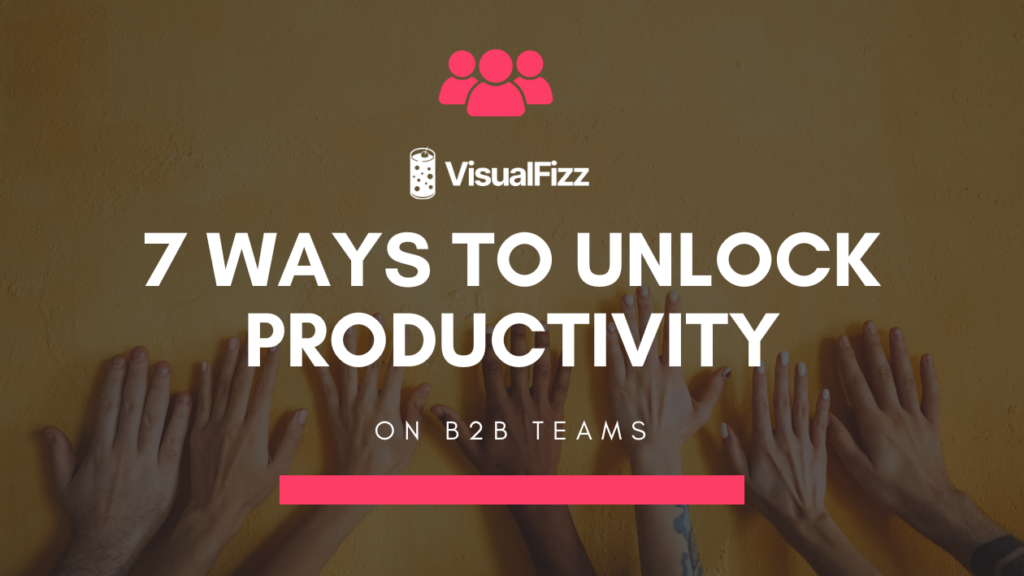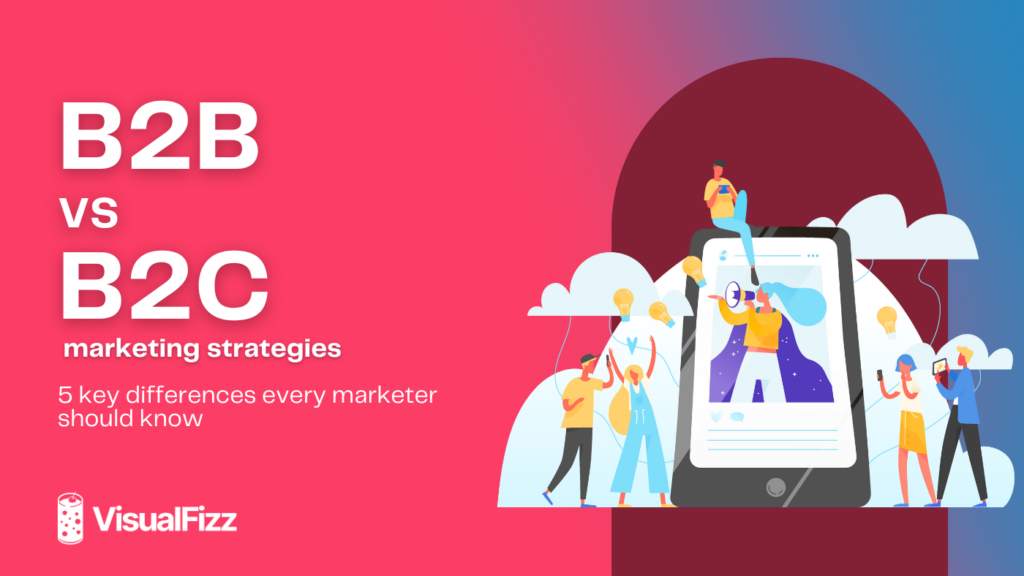
Unlocking Productivity: 7 Techniques Every Company Needs
What you’ll find included in thie guide:
- Measure Productivity
- Automate Your Workflows
- Manage Your Micromanagers
- Consider Sales Operations Tooling
- Incentivize and Reward Good Performance
- Discourage Overly-Long Workdays
- Go Easy When Your Workers Fall Short
- How Will You Unlock Productivity?
Building a B2B brand is hard work, and is about more than just creating and marketing a unique solution for customers. For anyone trying to bolster a B2B brand, ensuring internal business productivity is absolutely critical.
After all, even the best B2B solutions will fail in the marketplace if the operations behind them aren’t productive enough. Today, we’re going to help B2B brand owners unlock productivity by diving into seven surefire ways to do it.
1. Measure Productivity
To improve productivity, start by getting a realistic assessment of where things stand. This can help establish what’s been possible to this point for the company overall, while potentially also showing how different departments and employees perform.
Productivity can be measured in different ways. It can be as simple as asking employees to log their time on projects through CRM tools like Salesforce or even just in a live spreadsheet through Google Sheets or Excel. There’s also performance-monitoring software, which could be even better if your business is pivoting to remote work, part-time employment, or other strategies to deal with economic uncertainty.
More complex organizations might seek an external audit or even keep an auditor on staff to perform periodic internal audits of productivity. It’s all about a company’s needs and budget.
We should add that measuring productivity isn’t just about measuring the time employees spend on projects. Savvy companies might also look at total numbers of projects being handled on an annual basis or periodically review which tasks particular employees are most productive at.
2. Automate Your Workflows
Many things can hinder productivity for companies. One of the more vexing: Not having clear standard operating procedures (SOPs) spelled out for when an employee finishes their chunk of a project, which is when work should, ideally, pass to the next team member.
In the past, maybe these SOPs didn’t exist because they were time-consuming to write up and there was no guarantee anyone would ever use them. Thankfully, workflow automation software is making it so that these SOPs get followed automatically.
Exemplified by products like Asana, workflow automation software allows companies to delineate which tasks are handled by which employees on a team. As each team member checks off in the software that they’ve completed their task, the digital torch is automatically passed to the next worker.
There are numerous benefits associated with workflow automation software, with 31% of business leaders saying that it can cut labor costs, which implies better productivity.
3. Manage Your Micromanagers
Micromanaging is all too common at work, with 79% of employees reporting that they’ve experienced it. There’s also a pretty clear cost to companies, with that same survey noting that 36% of workers had left a job due to micromanagement.
It’s not hard to see why micromanagement drives talent away. The idea of having every decision, no matter how small, questioned by an overzealous manager is enough to make any reasonable worker uncomfortable.
For companies, the key becomes spotting micromanagers early and then developing ways to lessen the harm they can create. These managers don’t necessarily have to be fired. It’s just about reining them in a little and making sure they aren’t creating toxic environments.
It goes without saying that it doesn’t just have to be upper management helping their middle managers avoid micromanaging. Workers who might be dealing with a micromanager have a range of things they can do, including creating upfront agreements on what will get done, building trust that work will happen as it should and setting clear boundaries.
4. Consider Sales Operations Tooling
In the old days of B2B sales, maybe companies didn’t need much more than resourceful sales staff to generate a plentiful book of business. Certainly, a little bootstrapping can still go a long way, though companies can also avail themselves of a wide range of sales operations tools.
When we say sales operations tooling, what we’re generally referring to are a broad assortment of technological solutions that can make life easier for businesses.
One of the most well-known sales operations tools for businesses might be the customer relationship management (CRM) platform, like Salesforce or Microsoft Dynamics. These platforms can help sales teams organize and automate their approach to closing deals.
Other types of sales operations tooling includes sales intelligence tools that help turn data into business decisions and sales analytics tools which unlock market insights. More tools that can help businesses automate processes to improve efficiency will continue to emerge with the introduction of AI and machine learning.
5. Incentivize and Reward Good Performance
One of the major reasons for employees to not work hard is that they don’t feel they’re getting anything out of it!
Without stock options, profit sharing, or bonuses, an employee is liable to work only as hard as they must to keep their job. Anything beyond this might be about personal fulfillment or trying to build up one’s resume to land a different gig.
Thus, the wise B2B brand owner looks for ways to both incentivize and reward good performance. It can be as simple as buying the staff of their call center burritos on days of extra-high call volumes. Owners can also look for ways to kick bonuses or a share of profits to high-performing employees.
Bonus: You can even improve sales performance with the right incentive. Customer reward programs can boost B2B sales, sometimes by as much as 77% over five years.
6. Discourage Overly-Long Workdays
Here’s a fact that might surprise some people: In the world of business, more isn’t always more. A study found that people who worked 70 hours in a week were no more productive than those who worked 55 hours in a week.
There’s a darker side to this as well, with the World Health Organization noting that even working 55-hour weeks increases a person’s chance of stroke by 35%. They’re also 17% more likely to die of heart disease compared to people logging 35 to 40 hour weeks.
If a company wants happy, healthy, and productive workers, it must keep work to eight hours or less each day. While there will undoubtedly be times in any business endeavor where workers will put in extra hours, these should be the exception rather than the rule. Otherwise, both workers and their employers can pay dearly in the long run.
7. Go Easy When Your Workers Fall Short
Here’s another tip that might seem counterintuitive but can lead to both better working relations and productivity.
While there are a lot of good and capable workers in the world, everyone will have times they’re falling short of desired output.
When an employee underperforms, a company faces a critical decision. One option is to implement disciplinary measures such as a performance improvement plan, suspension, or even termination. However, this approach can sometimes lead to the loss of valuable employees, including those who are currently struggling and others who are disheartened by the company’s rigid response.
A more empathetic response can make all the difference. It’s worth taking the time to understand any personal challenges the employee might be facing, from health issues to family concerns. Offering support and guidance not only helps them overcome these hurdles but also builds a sense of loyalty and trust within the team. In the world of B2B sales, fostering this kind of positive environment can boost overall productivity and strengthen business relationships.
How Will You Unlock Productivity?
In the competitive landscape of B2B where every advantage counts, unlocking productivity becomes paramount.
The seven techniques above offer a roadmap for B2B entrepreneurs and brand owners to navigate the complexities of productivity enhancement. By implementing these strategies both conventional and less-so, B2B brands can lay a strong foundation for sustained success in a bustling market.
Guest Author Bio:
Graham Womack is a writer. His work as a journalist has appeared in a wide assortment of publications, including the Washington Post, San Francisco Chronicle and Sacramento Bee. Separate from this, he has written extensively for corporate clients about the ever-evolving world of B2B SaaS solutions. Email him to learn more.
Note: this post, and the views and advice included, are a guest post from a 3rd party company that is not VisualFizz. Please reach out to our team directly if you’d like to discuss how the content included in this guest post could be relevant to your marketing goals.
Want to be featured on the VisualFizz blog? Learn how to Write for Us.
Publishing Date:






